#United States National Park Service
Explore tagged Tumblr posts
Text
This is a public service announcement.
Do not go near the staircases in the middle of the woods that lead to nowhere as they are extrusions of higher dimensional pockets of space, attempting to climb one of these stairs is a dangerous endeavour as one hiker who cannot be identified at the moment and a park ranger in training named Laura Watkins have both been killed by the higher dimensional geometry folding their skin off and causing holes to appear in their bodies, primarily around their face, abdomen, and leg areas, if you see any staircases that lead to nowhere please inform park authorities so that the area may be quarantined off from the rest of the park to the best of their abilities.
Thank you for listening to this message brought to you by the United States National Park Service.
2 notes
·
View notes
Text



















The United States National Park Service was created on August 25, 1916.
National Park Service Founders Day
The National Park Service was created when President Woodrow Wilson signed the Organic Act on August 25, 1916. The anniversary of its creation is known as National Park Service Founders Day, or simply as Founders Day, and is celebrated by all national parks. They offer free admission and host special programs, both in-person and virtual. The celebration happens to take place during National Parks Month.
According to the Organic Act, "the Service thus established shall promote and regulate the use of the Federal areas known as national parks, monuments and reservations" and their "purpose is to conserve the scenery and the natural and historic objects and the wild life therein and to provide for the enjoyment of the same in such manner and by such means as will leave them unimpaired for the enjoyment of future generations." This is not too far removed from the National Park Service's current mission statement: "The National Park Service preserves unimpaired the natural and cultural resources and values of the National Park System for the enjoyment, education, and inspiration of this and future generations. The Park Service cooperates with partners to extend the benefits of natural and cultural resource conservation and outdoor recreation throughout this country and the world." The National Park Service is a bureau in the U.S. Department of the Interior. It is led by a director who is nominated by the president and confirmed by the U.S. Senate.
The first national park was Yellowstone National Park. It was established on March 1, 1872, with the Yellowstone Act, "as a public park or pleasuring-ground for the benefit and enjoyment of the people." Yellowstone was administered by the U.S. Department of the Interior, as were other early parks and some monuments, while other monuments and historical areas were administered by the War Department and the Forest Service of the Department of Agriculture. When the National Park Service was created on today's date in 1916, it managed 35 parks and monuments. With an executive order in 1933, President Franklin Roosevelt brought 56 national monuments and military sites administered by the War Department and the Forest Service into the National Park Service. This move brought areas of historical, scenic, and scientific importance together. For a new park to be created, there must be an act of Congress. But, on account of the Antiquities Act of 1906, the president can proclaim national monuments on lands under federal jurisdiction.
By the 2020s, there were over 420 national park sites, or units, in the National Park System, covering over 85 million acres of land, located in every state, in the District of Columbia, and in a number of US territories. Collectively they are referred to as parks, although there are many naming designations, such as National Battlefields, National Military Parks, and National Historic Sites. There are also "related areas"—these are not managed by the National Park Service, but "are linked in importance and purpose to places managed directly by the National Park Service by preserving important segments of the nation's natural and cultural heritage." Examples are National Heritage Areas, Affiliated Areas, and trails in the National Trails System. The National Park Service employs about 20,000 people, and has almost 300,000 volunteers! With such an expanse of land in its jurisdiction and so many people involved in the land's preservation, it's apparent that the National Park Service's original goal of conservation for future generations is still being met, and this is celebrated today with National Park Service Founders Day!
How to Observe National Park Service Founders Day
There are numerous ways you could celebrate the day:
Visit a national park or other location managed by the National Park System. Remember, there is free admission today! If you can't visit in person, you could do so virtually.
Get the NPS app.
Check out the National Park Service's "Games and Challenges."
Read a book about the national parks.
Watch National Parks: America's Best Idea and read its companion book.
Learn about the past directors of the National Park Service.
Volunteer or work for the National Park Service.
Follow the National Park Service's social media accounts.
Source
#Glacier National Park#Yellowstone National Park#Death Valley National Park#Skagway Historic District#United States National Park Service#25 August 1916#anniversary#US history#tourist attraction#original photography#USA#National Park Service Founders Day#Arches National Park#Yosemite National Park#Canyonlands National Park#Mesa Verde National Park#Colorado National Monument#Dinosaur National Monument#Petrified Forest National Park#Acadia National Park#Everglades National Park#Grand Canyon National Park#Painted Desert#White Sands National Park#Gettysburg National Military Park#Mammoth Cave National Park#Olympic National Park#Montezuma Castle National Monument
3 notes
·
View notes
Text
"The Yurok will be the first Tribal nation to co-manage land with the National Park Service under a historic memorandum of understanding signed on Tuesday [March 19, 2024] by the tribe, Redwood national and state parks, and the non-profit Save the Redwoods League, according to news reports.
The Yurok tribe has seen a wave of successes in recent years, successfully campaigning for the removal of a series of dams on the Klamath River, where salmon once ran up to their territory, and with the signing of a new memorandum of understanding, the Yurok are set to reclaim more of what was theirs.
Save the Redwoods League bought a property containing these remarkable trees in 2013, and began working with the tribe to restore it, planting 50,000 native plants in the process. The location was within lands the Yurok once owned but were taken during the Gold Rush period.
Centuries passed, and by the time it was purchased it had been used as a lumber operation for 50 years, and the nearby Prairie Creek where the Yurok once harvested salmon had been buried.
Currently located on the fringe of Redwoods National and State Parks which receive over 1 million visitors every year and is a UNESCO Natural Heritage Site, the property has been renamed ‘O Rew, a Yurok word for the area.
“Today we acknowledge and celebrate the opportunity to return Indigenous guardianship to ‘O Rew and reimagine how millions of visitors from around the world experience the redwoods,” said Sam Hodder, president and CEO of Save the Redwoods League.
Having restored Prarie Creek and filled it with chinook and coho salmon, red-legged frogs, northwestern salamanders, waterfowl, and other species, the tribe has said they will build a traditional village site to showcase their culture, including redwood-plank huts, a sweat house, and a museum to contain many of the tribal artifacts they’ve recovered from museum collections.
Believing the giant trees sacred, they only use fallen trees to build their lodges.
“As the original stewards of this land, we look forward to working together with the Redwood national and state parks to manage it,” said Rosie Clayburn, the tribe’s cultural resources director.
It will add an additional mile of trails to the park system, and connect them with popular redwood groves as well as new interactive exhibits.
“This is a first-of-its-kind arrangement, where Tribal land is co-stewarded with a national park as its gateway to millions of visitors. This action will deepen the relationship between Tribes and the National Park Service,” said Redwoods National Park Superintendent Steve Mietz, adding that it would “heal the land while healing the relationships among all the people who inhabit this magnificent forest.”"
-via Good News Network, March 25, 2024
#indigenous#land back#indigenous issues#first nations#native american#indigenous peoples#yurok#yurok tribe#national parks service#national park#redwoods#california#trees#trees and forests#united states#good news#hope#indigenous land
5K notes
·
View notes
Text



Smokey Bear - art by Rudolph Wendelin (c. 1995)
#rudolph wendelin#smokey bear#fire prevention#forest fires#country art#national parks#united states forest service#1990s#1995
266 notes
·
View notes
Text

A good heads up from the fine folks at Alt National Parks.
If you're a government worker trying to do the world some good keep this in mind
29 notes
·
View notes
Text

#funny#humor#tweets#social media#national park service#national parks#america#united states#living#life#selfies#photographs#bison#buffalo#animals#wild animals#don't be stupid
14 notes
·
View notes
Text
Ranger Peyton Here! I love to travel around North America, have visited all 50 US states plus DC, 9 of the 13 provinces and Territories of Canada. I am also a big fan of the US National Park Service and Parks Canada. Have visited 149 of the 431 US NPS sites and 8 of the 49 Parks Canada sites. And have visited so many state and local places as well in my travels around the continent. [Also Disclaimer: I am not a spokesperson for any of the sites I talk about. I'm just a woman who loves to share her passion with others.] I love camping, hiking, kayaking and most things out of doors. It's where I recharge and focus. You will find all sorts of those things from all over the world here. Some tags to keep an eye out for: #Ranger Peyton Tips- Some times not well known facts and/or my personal recommendations for visiting some of the sites I talk about.
#Ranger Peyton Ranger Talks- educational things about visiting the outdoors and/or National Park Sites #Ranger Peyton Gets (un)Real- Strange tales from sites all over the world. You decide if the stories are real or not.
#Ranger Peyton Roadtrip Playlist- songs that get me going when I drive around to all these places. #Ranger P's Queues- Queued posts Hit me up with questions on this tour of ours. Fill my inbox ('Ranger! I have a question' button above), and I will get back to you with my personal tips for the sites as well as any other info I can gather together with #Ranger Peyton Answers Your Burning Questions.
Stay safe and be kind to each other. Til next time, I'm your guide Ranger Peyton. 💚🌲🏕🥾👽⛰🧭🛶
PS: Follow back is from @peyton--warren. See that blog's pinned post for my other blogs.
#Ranger Peyton Tips#Ranger Peyton Gets (un)Real#Ranger Peyton Roadtrip Playlist#Ranger Peyton Answers Your Burning Questions#Ranger Peyton Ranger Talks#travel#travel blog#nature#landscape#photography#photographers on tumblr#national park service#forest#mountains#naturecore#traveling#destinations#sightseeing#United States#north america#canada#parks canada#Ranger P's Queues
10 notes
·
View notes
Text
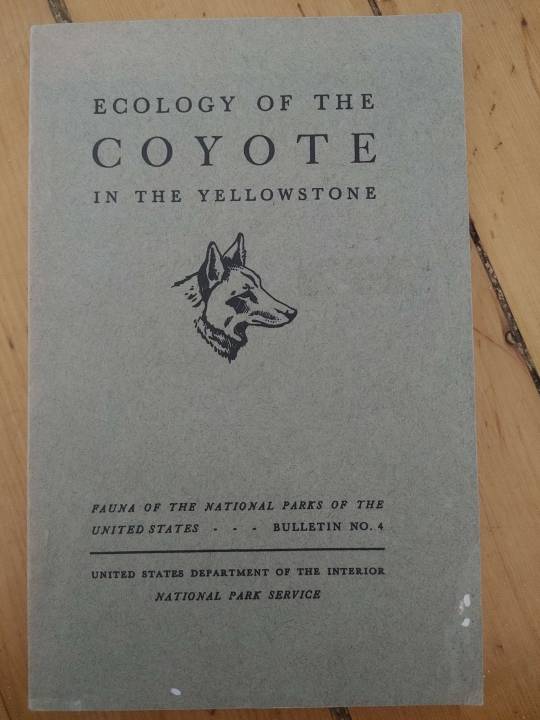
Ecology of the Coyote in Yellowstone, by the National Park Service, 1940
I've only skim read this, but I love it. It focuses primarily on their dietary habits. I really love these older bulletins and want more of them, I know of one other coyote one I really desire but haven't been able to find for sale.
#my library#ecology of the coyote in yellowstone#national park service#united states department of the interior#fauna of the national parks of the united states#coyote book#coyote#ecology#1940#1940s
47 notes
·
View notes
Photo
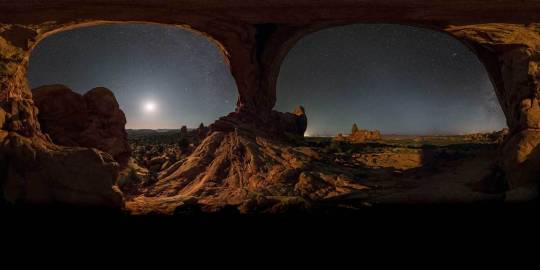
Arches National Park has the greatest concentration of natural formations in the United States. It’s just one of many exceptional sites administered by the National Park Service.
PHOTOGRAPH BY BABAK TAFRESHI, NAT GEO IMAGE LIBRARY
#babak tafreshi#photographer#national geographic#arches national park#arch#united states#national park service#nature#night sky#landscape#rock formations
28 notes
·
View notes
Text
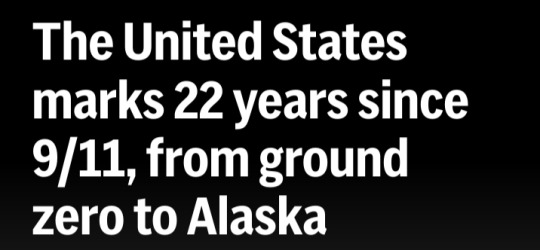

By JENNIFER PELTZ
September 11, 2023
NEW YORK (AP) — Americans are looking back on the horror and legacy of 9/11, gathering Monday at memorials, firehouses, city halls and elsewhere to observe the 22nd anniversary of the deadliest terror attack on U.S. soil.
Commemorations stretch from the attack sites — at New York’s World Trade Center, the Pentagon and Shanksville, Pennsylvania — to Alaska and beyond.
President Joe Biden is due at a ceremony on a military base in Anchorage.
His visit, en route to Washington, D.C., from a trip to India and Vietnam, is a reminder that the impact of 9/11 was felt in every corner of the nation, however remote.
The hijacked plane attacks claimed nearly 3,000 lives and reshaped American foreign policy and domestic fears.
"On that day, we were one country, one nation, one people, just like it should be. That was the feeling — that everyone came together and did what we could, where we were at, to try to help,” said Eddie Ferguson, the fire-rescue chief in Virginia’s Goochland County.
It’s more than 100 miles (160 kilometers) from the Pentagon and more than three times as far from New York.
But a sense of connection is enshrined in a local memorial incorporating steel from the World Trade Center’s destroyed twin towers.
The predominantly rural county of 25,000 people holds not just one but two anniversary commemorations: a morning service focused on first responders and an evening ceremony honoring all the victims.
Other communities across the country pay tribute with moments of silence, tolling bells, candlelight vigils and other activities.

In Columbus, Indiana, 911 dispatchers broadcast a remembrance message to police, fire and EMS radios throughout the 50,000-person city, which also holds a public memorial ceremony.
Boy Scouts and Girl Scouts raise and lower the flag at a commemoration in Fenton, Missouri, where a “Heroes Memorial” includes a piece of World Trade Center steel and a plaque honoring 9/11 victim Jessica Leigh Sachs.
Some of her relatives live in the St. Louis suburb of 4,000 residents.
“We’re just a little bitty community,” said Mayor Joe Maurath, "but it’s important for us to continue to remember these events. Not just 9/11, but all of the events that make us free.”
New Jersey’s Monmouth County, which was home to some 9/11 victims, made Sept. 11 a holiday this year for county employees so they could attend commemorations.
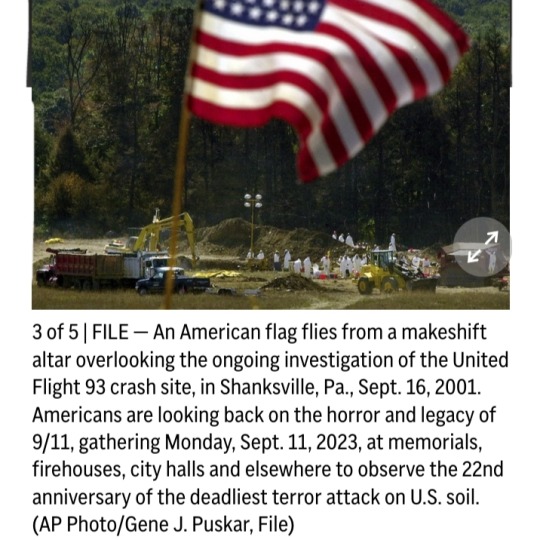
As another way of marking the anniversary, many Americans do volunteer work on what Congress has designated both Patriot Day and a National Day of Service and Remembrance.
At ground zero, Vice President Kamala Harris is due to join the ceremony on the National September 11 Memorial & Museum plaza.
The event will not feature remarks from political figures, instead giving the podium to victims’ relatives for an hourslong reading of the names of the dead.
James Giaccone signed up to read again this year in memory of his brother, Joseph Giaccone, 43. The family attends the ceremony every year to hear Joseph’s name.
“If their name is spoken out loud, they don’t disappear,” James Giaccone said in a recent interview.
The commemoration is crucial to him.
“I hope I never see the day when they minimize this,” he said. “It’s a day that changed history.”
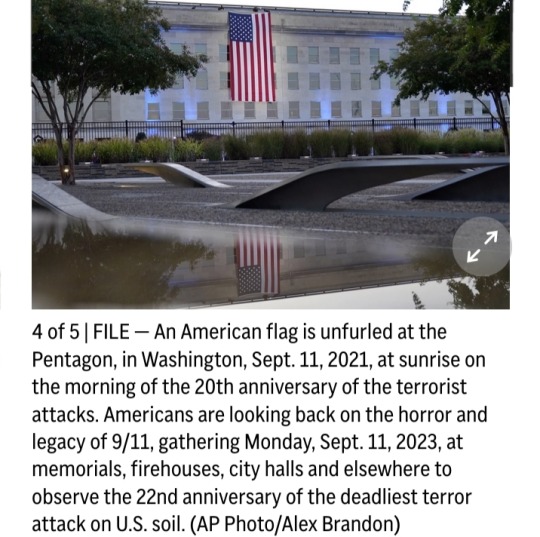
Biden, a Democrat, will be the first president to commemorate Sept. 11 in Alaska, or anywhere in the western U.S.
He and his predecessors have gone to one or another of the attack sites in most years, though Republican George W. Bush and Democrat Barack Obama each marked the anniversary on the White House lawn at times.
Obama followed one of those observances by recognizing the military with a visit to Fort Meade in Maryland.
First lady Jill Biden is due to lay a wreath at the 9/11 memorial at the Pentagon.
In Pennsylvania, where one of the hijacked jets crashed after passengers tried to storm the cockpit, a remembrance and wreath-laying is scheduled at the Flight 93 National Memorial in Stoystown operated by the National Park Service.
Harris’ husband, Doug Emhoff, is expected to attend the ceremony.
The memorial site will offer a new educational video, virtual tour and other materials for teachers to use in classrooms.
Educators with a total of more than 10,000 students have registered for access to the free “National Day of Learning” program, which will be available through the fall, organizers say.
“We need to get the word out to the next generation,” said memorial spokesperson Katherine Hostetler, a National Park Service ranger.

#9/11#New York#Twin Towers#World Trade Center#Pentagon#Pennsylvania#hijacked plane attacks#Heroes Memorial#Patriot Day#National Day of Service and Remembrance#Flight 93 National Memorial#National Park Service#National Day of Learning#National September 11 Memorial & Museum#11 September 2001#United States#terrorist attack#terror attack
16 notes
·
View notes
Text

To whomever needs to hear this today: Don't give up! Everything is possible with God!
Photo: Rocky Mountain National Park, Colorado
#colorado#nature#encouragement#inspiration#hope#hiking#the great outdoors#america the beautiful#rocky mountain national park#rocky mountains#colorado rockies#co#us national parks#nps#national park service#western usa#united states of america#the wild west#the centennial state#mountains#waterfall#wildflowers#adventure#explore#travel#tourism#god's creation#natural beauty#landscape
3 notes
·
View notes
Text
This New Park Gives Different Views of the Grand Canyon—with No Crowds
These sacred Indigenous lands in Arizona just got government protection. Here’s how to explore their hikes, wildlife, and impressive vistas.
— By Joe Yogerst | September 1, 2023

Red Butte, which the Havasupai people call Wii'i Gdwiisa (“Clenched Fist Mountain”), is one of many sacred Indigenous sites within Arizona’s new Baaj Nwaavjo I’tah Kukveni Grand Canyon National Monument. Named a national monument by President Joseph Biden in August 2023, the one-million-acre wilderness offers hiking, backcountry camping, and views of the Grand Canyon without the crowds. Photograph By Taylor McKinnon, Center For Biological Diversity
Grand Canyon National Park draws 4.7 million visitors a year to the northwest corner of Arizona to hike, camp, or watch wildlife. But most of them don’t realize that the lands within and surrounding the park are sacred to the region’s 12 Indigenous tribes, which include the Havasupai, Hopi, Navajo, and several bands of Paiute.
That changed on August 8 when President Joseph Biden signed a decree creating the Baaj Nwaavjo I’tah Kukveni—Ancestral Footprints of the Grand Canyon National Monument. Sprawling across more than 960,000 acres directly north and south of the national park, the new monument offers more rugged, less crowded recreation than its neighbor. It also provides a view of the landscape through Indigenous eyes.
“Baaj nwaavjo in Havasupai means ‘where the ancient people roamed,’” says Carletta Tilousi, coordinator of the Grand Canyon Tribal Coalition. “I’tah kukveni is the Hopi translation of ‘ancestral footsteps’. This reaffirms their creation stories.”
Here’s how the monument came to be, and how to explore it.
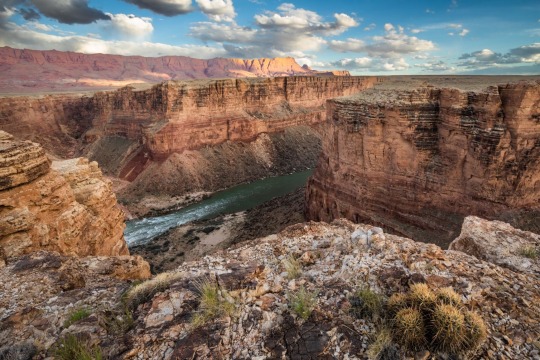
Baaj Nwaavjo I’tah Kukveni yields views of the Colorado River and Grand Canyon from a different perspective. Photograph By Amy S. Martin
How to Make a National Monument
It took two million years for the Grand Canyon itself to form and around 40 years for Baaj Nwaavjo I’tah Kukveni to become reality. “The protection for these lands is something the tribes have focused on since as far back as the 1980s,” says Amber Reimondo of the Grand Canyon Trust, a nonprofit devoted to preserving the region.
Many of these Indigenous people were expelled from their territory when Grand Canyon National Park was established in 1919. They campaigned for decades to receive stronger protection for their lands around the park, overcoming entities that wanted fewer legal obstacles to development and mining. After President Biden’s election in 2020, the 12 tribes formed a coalition which led to the lands receiving federal status.

Though the National Park Service oversees Grand Canyon National Park, monuments such as Baaj Nwaavjo I’tah Kukveni are run by the U.S. Forest Service (USFS) and the Bureau of Land Management (BLM). Monuments generally have fewer restrictions regarding their use (e.g., sometimes hunting or logging is allowed), as well as fewer facilities for visitors.
Fewer Amenities, Fewer Crowds
Like many national monuments, Baaj Nwaavjo I’tah Kukveni exudes raw nature. It has no bathrooms or visitor center; access is primarily via dirt roads or rough trails; you’ll need a four-wheel-drive to reach many sections of the park.
What it offers is solitude and peace amid the forests and grasslands of northern Arizona. You can gaze at the Grand Canyon without thousands of other people jostling for the same space, hike trails where yours are the only footsteps, and make camp at secluded spots. Plus you might encounter wildlife such as elk, black bear, mule deer, birds, or bison.
That solitude is also important to the Indigenous people. Tilousi says that when she visits the busy South Rim inside Grand Canyon National Park, “It’s very difficult for me to find a spot where I can offer prayers and offerings in a quiet way.” She feels that won’t be an issue in the off-the-beaten-track lands of the new monument.

Native plants including yucca flourish within Baaj Nwaavjo I'teh Kukveni National Monument. Photograph By Amy S. Martin
Exploring the Monument
The vast wilderness of Baaj Nwaavjo I’tah Kukveni is divided into three distinct sections or parcels, each with its own appeal.
The southernmost section, the Tusayan Ranger District/South Parcel, is the easiest to explore. Comprising 330,000 acres within the Kaibab National Forest, its pine woodlands and sagebrush prairie are accessible via Forest Service roads or Sections 35 through 37 of the Arizona Trail, an 800-mile hiking route stretching across the entire state.
The South Parcel also shows signs of human life, including the rusty hangar of the 1920s Red Butte Airfield and the 80-foot-tall Grandview Lookout Tower, which you can climb for views of the Colorado Plateau and the Grand Canyon.
The other sections of the monument, Kanab Plateau/Northwest Parcel and Rock House Valley/Northeast Parcel, are located beyond the North Rim section of Grand Canyon National Park.
“It's a big, remote wilderness,” says Michael Cravens, advocacy and conservation director of the Arizona Wildlife Federation. “I’ve never in my life been somewhere with night skies that spectacular.” But he cautions visitors “to be careful and prepared” for the extreme weather and topography. You can reach the northern parcels on BLM roads south of U.S. Highway 89A.

The vast House Rock Valley stretches through a portion of the new national monument. Photograph By Taylor McKinnon, Center For Biological Diversity
Stretched across the Kanab Plateau and Antelope Valley, the Kanab Plateau section has hiking routes through spectacular side canyons and to panoramic views such as Gunsight Point.
The Hack Trail drops down into the Kanab Creek Wilderness with its enormous red-rock canyons, a landscape almost as impressive as the Grand Canyon itself. Experienced hikers can continue down Kanab Creek to the Colorado River or along other trails to vertiginous overlooks along the North Rim.
Set beneath the Vermilion Cliffs National Monument, the Rock House Valley section of Baaj Nwaavjo I’tah Kukveni tumbles across sagebrush flats to the edge of Marble Canyon. Rugged hiking trails here include the Soap Creek Trail, which winds down from the Rapids/Badger Camp Overlook to a primitive campsite near the river.
Rough roads lead south to viewpoints for Rider Canyon, South Canyon, and other offshoots of the Grand Canyon. Here, you might even spot the North Rim’s resident bison herd, brought to the Arizona Strip in 1906 by Charles “Buffalo” Jones as part of efforts to save the species.
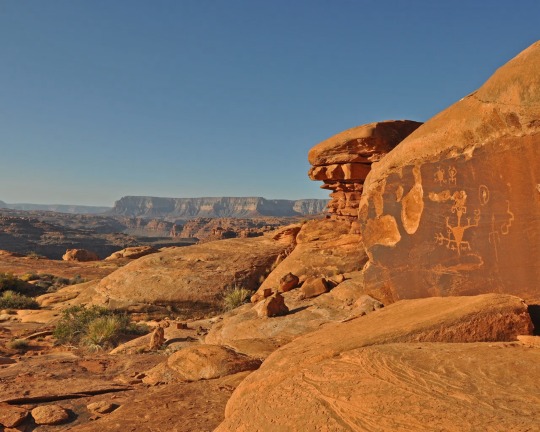
Ancient rock art can be spotted in the Kanab Creek Wilderness portion of Baaj Nwaavjo I’tah Kukveni National Monument. Photograph By Natpar Collection, Alamy Stock Photo

The Havasupai Indian Reservation in Arizona, which includes the Havasu Waterfall—part of the Havasupai Falls—is the current home of the Havasupai people. After the Grand Canyon became a national park, they were forcibly removed from their traditional homelands in the canyon and in nearby lands that will be part of the new national monument. Photograph By Mike Theiss National Geographic Image Collection
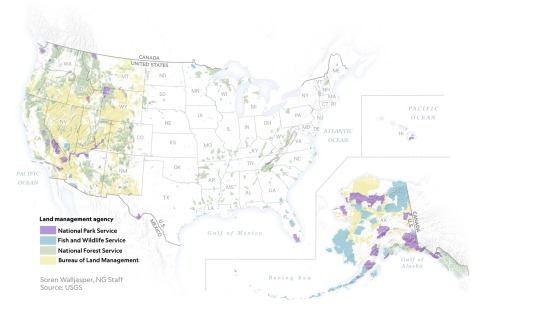
1 Million Acres of ‘Sacred’ Land Near Grand Canyon are Receiving New Protections! The designation of the land as a national monument, confirmed to National Geographic this week by the White House, will prevent new uranium mines and protect historically significant tribal lands.
#United States 🇺🇸 National Parks#New Park#Grand Canyan#Indigenous Lands#Arizona#Wildlife#Red Butte | Clenched Fist Mountain#Arizona | Baaj Nwaavjo I’tah Kukveni Grand Canyon National Monument#Center For Biological Diversity#President Joe Biden#Carletta Tilousi | Coordinator | Grand Canyon Tribal Coalition#Ancestral Footprints#Colorado River#Amber Reimondo | Grand Canyon Trust | Non-profit | Region Preservation#National Park Service#U.S. Forest Service (USFS) | The Bureau of Land Management (BLM).#Wildlife | Elk | Black Bear 🐻 | Mule | Deer 🦌 | Birds 🦅 | Bison 🦬#Hike Trails#Off-The-Beaten-Track Lands#Tusayan Ranger District | South Parcel#Kaibab National Forest 🌳#Colorado Plateau#Kanab Plateau/Northwest Parcel | Rock House Valley/Northeast Parcel#U.S. Highway 89A#Michael Cravens | Arizona Wildlife Federation#Kanab Plateau | Antelope Valley#Gunsight Point#Hack Trail#Vermilion Cliffs National Monument#Rock House Valley
3 notes
·
View notes
Text

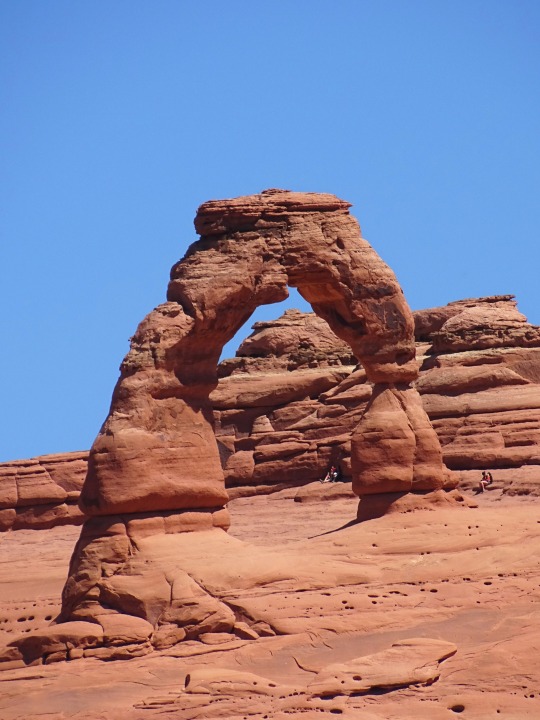
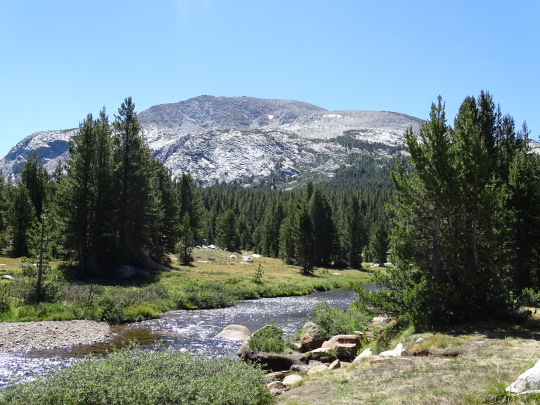



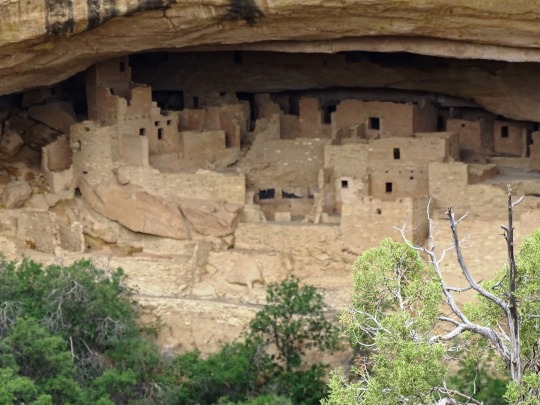

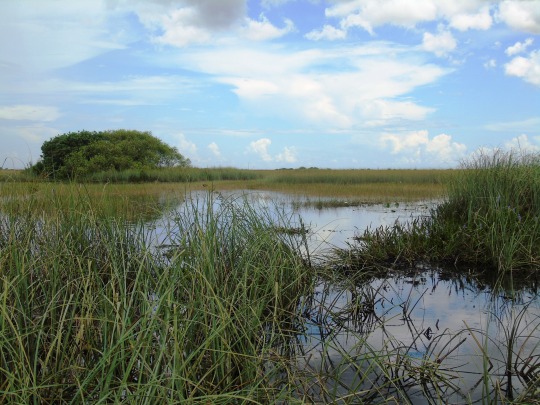



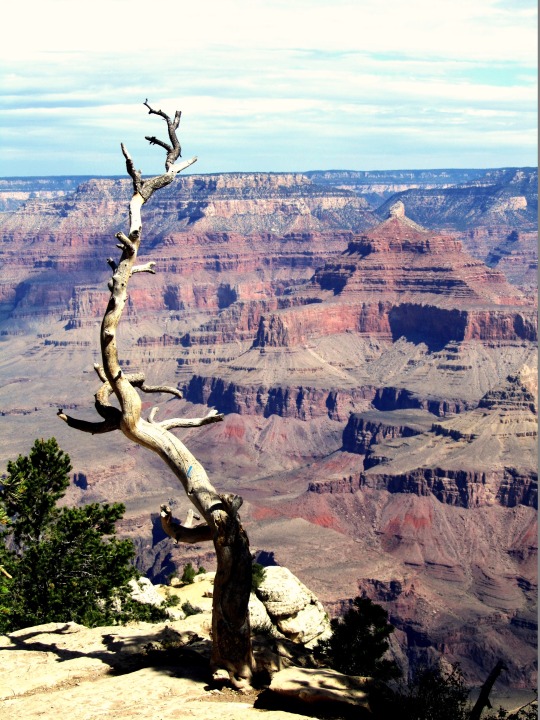


The United States National Park Service was created on August 25, 1916.
National Park Service Founders Day
The National Park Service was created when President Woodrow Wilson signed the Organic Act on August 25, 1916. The anniversary of its creation is known as National Park Service Founders Day, or simply as Founders Day, and is celebrated by all national parks. They offer free admission and host special programs, both in-person and virtual. The celebration happens to take place during National Parks Month.
According to the Organic Act, "the Service thus established shall promote and regulate the use of the Federal areas known as national parks, monuments and reservations" and their "purpose is to conserve the scenery and the natural and historic objects and the wild life therein and to provide for the enjoyment of the same in such manner and by such means as will leave them unimpaired for the enjoyment of future generations." This is not too far removed from the National Park Service's current mission statement: "The National Park Service preserves unimpaired the natural and cultural resources and values of the National Park System for the enjoyment, education, and inspiration of this and future generations. The Park Service cooperates with partners to extend the benefits of natural and cultural resource conservation and outdoor recreation throughout this country and the world." The National Park Service is a bureau in the U.S. Department of the Interior. It is led by a director who is nominated by the president and confirmed by the U.S. Senate.
The first national park was Yellowstone National Park. It was established on March 1, 1872, with the Yellowstone Act, "as a public park or pleasuring-ground for the benefit and enjoyment of the people." Yellowstone was administered by the U.S. Department of the Interior, as were other early parks and some monuments, while other monuments and historical areas were administered by the War Department and the Forest Service of the Department of Agriculture. When the National Park Service was created on today's date in 1916, it managed 35 parks and monuments. With an executive order in 1933, President Franklin Roosevelt brought 56 national monuments and military sites administered by the War Department and the Forest Service into the National Park Service. This move brought areas of historical, scenic, and scientific importance together. For a new park to be created, there must be an act of Congress. But, on account of the Antiquities Act of 1906, the president can proclaim national monuments on lands under federal jurisdiction.
By the 2020s, there were over 420 national park sites, or units, in the National Park System, covering over 85 million acres of land, located in every state, in the District of Columbia, and in a number of US territories. Collectively they are referred to as parks, although there are many naming designations, such as National Battlefields, National Military Parks, and National Historic Sites. There are also "related areas"—these are not managed by the National Park Service, but "are linked in importance and purpose to places managed directly by the National Park Service by preserving important segments of the nation's natural and cultural heritage." Examples are National Heritage Areas, Affiliated Areas, and trails in the National Trails System. The National Park Service employs about 20,000 people, and has almost 300,000 volunteers! With such an expanse of land in its jurisdiction and so many people involved in the land's preservation, it's apparent that the National Park Service's original goal of conservation for future generations is still being met, and this is celebrated today with National Park Service Founders Day!
How to Observe National Park Service Founders Day
There are numerous ways you could celebrate the day:
Visit a national park or other location managed by the National Park System. Remember, there is free admission today! If you can't visit in person, you could do so virtually.
Get the NPS app.
Check out the National Park Service's "Games and Challenges."
Read a book about the national parks.
Watch National Parks: America's Best Idea and read its companion book.
Learn about the past directors of the National Park Service.
Volunteer or work for the National Park Service.
Follow the National Park Service's social media accounts.
Source
#Skagway Historic District#United States National Park Service#25 August 1916#anniversary#US history#cityscape#architecture#landscape#tourist attraction#original photography#USA#National Park Service Founders Day#Arches National Park#Yosemite National Park#Canyonlands National Park#Mesa Verde National Park#Colorado National Monument#Dinosaur National Monument#Petrified Forest National Park#Acadia National Park#Everglades National Park#Grand Canyon National Park#Painted Desert#White Sands National Park#Gettysburg National Military Park#Mammoth Cave National Park#Olympic National Park
2 notes
·
View notes
Text
"When President Joe Biden signed a proclamation Tuesday establishing a national monument honoring Emmett Till and his mother, Mamie Till-Mobley, it marked the fulfillment of a promise Till’s relatives made after his death 68 years ago.
The Black teenager from Chicago, whose abduction, torture and killing in Mississippi in 1955 helped propel the Civil Rights Movement, is now an American story, not just a civil rights story, said Till’s cousin the Rev. Wheeler Parker Jr.
“It has been quite a journey for me from the darkness to the light,” Parker said during a proclamation signing ceremony at the White House attended by dozens, including other family members, members of Congress and civil rights leaders.
“Back then in the darkness, I could never imagine the moment like this, standing in the light of wisdom, grace and deliverance,” he said.
With the stroke of Biden’s pen, the Emmett Till and Mamie Till-Mobley National Monument, located across three sites in two states, became federally-protected places. Before signing the proclamation, the president said he marvels at the courage of the Till family to “find faith and purpose in pain.”
“Today, on what would have been Emmett’s 82nd birthday, we add another chapter in the story of remembrance and healing,” Biden said...
On Tuesday, reaction poured in from other elected officials and from the civil rights organizing community. The Rev. Al Sharpton said the Till national monument designation tells him “that out of pain comes power.”
House Democratic Leader Hakeem Jefferies said the monument “places the life and legacy of Emmett Till among our nation’s most treasured memorials.”
“Black history is American history,” he said in a written statement...
Till-Mobley demanded that Emmett’s mutilated remains be taken back to Chicago for a public, open casket funeral that was attended by tens of thousands of people. Graphic images taken of Emmett’s remains, sanctioned by his mother, were published by Jet magazine and fueled the Civil Rights Movement...
Altogether, the Till national monument will include 5.7 acres (2.3 hectares) of land and two historic buildings. The Mississippi sites are Graball Landing, the spot where Emmett’s body was pulled from the Tallahatchie River just outside of Glendora, Mississippi, and the Tallahatchie County Second District Courthouse in Sumner, Mississippi, where Emmett’s killers were tried...
The Illinois site is Roberts Temple Church of God in Christ in Chicago, where Emmett’s funeral was held in September 1955...
Mississippi state Sen. David Jordan, 90, was a freshman at Mississippi Valley State College in 1955 when he attended part of the trial of the two men charged with killing Emmett. As a state senator for the past 30 years, Jordan, who is Black, spearheaded fundraising for a statue of Emmett Till that was dedicated last year in Greenwood, Mississippi, a few miles from where the teenager was abducted.
On Tuesday, Jordan praised Biden for creating the Till national monument.
“It’s one of the greatest honors that a president could pay to a person, 14, who lost his life in Mississippi that’s created a movement that changed America,” Jordan told the AP."
-via AP, July 25, 2023
#black lives matter#civil rights#civil rights movement#emmett till#lynching#illinois#chicago#mississippi#united states#us politics#us history#american history#black history#african america history#joe biden#democrats#hakeem jeffries#national monument#national parks#national parks service#racism#cw murder#anti blackness#jim crow#cw lynching#cw torture#cw mutilation#hope
101 notes
·
View notes
Text
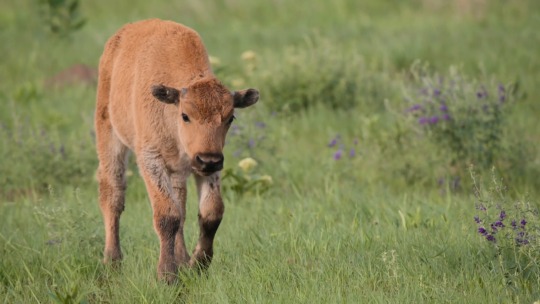


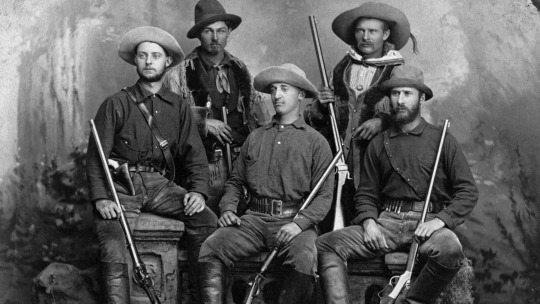

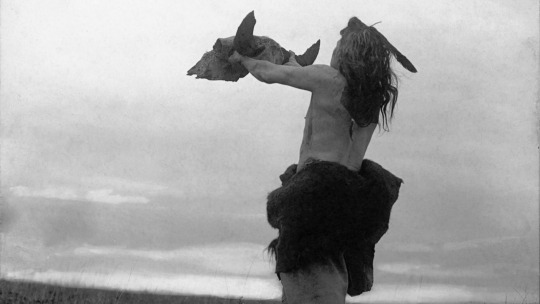


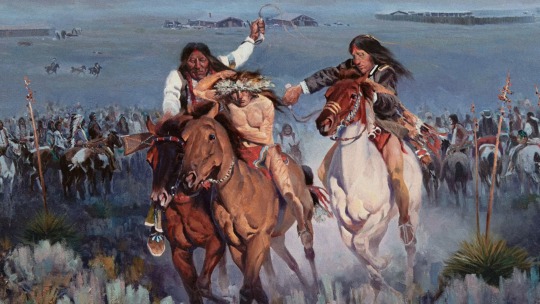



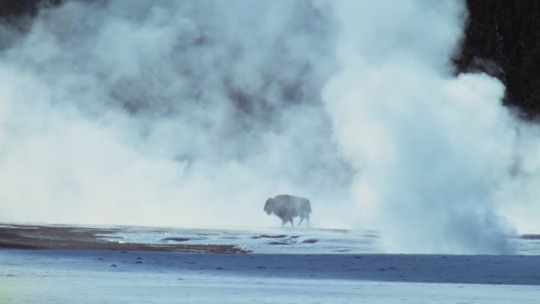
THE AMERICAN BUFFALO (2023; dir. Ken Burns and Dayton Duncan)
Episode One: “Blood Memory”
There is no story anywhere in world history that involves as large a destruction of wild animals as happened in North America – in the Western United States in particular –between 1800 and 1890.
– Dan Flores, American cultural and environmental historian
A cold wind blew across the prairie when the last buffalo fell... A death wind for my people.
– Sitting Bull, Hunkpapa Lakota leader
We have seen the Indian and the game retreat before the white man and the cattle, and beheld the tide of settlement move forward, which threatens before long to leave no portion of our vast territory unbroken by the farmer's plow or untrodden by his flocks. There is one spot left: a single rock about which this tide will break, and past which it will sweep, leaving it undefiled by the unsightly traces of civilization. Here in this Yellowstone Park, the large game of the West will be preserved from extermination in this, their last refuge.
– George Bird Grinnell, American conservationist and anthropologist
#The American Buffalo#Ken Burns#Dayton Duncan#bison#American bison#American Indians#Native Americans#Indigenous Americans#Lakota#United States#Wyoming#Standing Rock#Dan Flores#Sitting Bull#George Bird Grinnell#Ulysses S. Grant#Yellowstone#National Park Service#NPS#PBS
6 notes
·
View notes
Note
Very exciting!
Hey sorry if this isn't....really your thing? I mean it kinda is tangentially!
The National Park Service is looking for people who can read English Cursive, to help them transcribe old records from the Revolutionary War!
You can also help them by tagging old pictures and articles (I know a lot of people here would be really good at that!) to help with searches
They have instructions and even short little videos you can watch to learn how best to help them! Idk seemed like a fun thing some people might wanna help with! There's apparently close to 8 million (iirc) records and they say some of them are really fascinating!
Here's the link to the announcement:
https://www.nationalparkstraveler.org/2025/01/can-you-read-cursive-national-park-service-wants-hear-you
thank you! I fully cannot read writing from that era, but maybe someone else can
#history#national park services#writing#language#linguistics#american history#american revolution#revolutionary war#national archives#united states#signal boost
597 notes
·
View notes